- Products & Solutions
- XFdtd
XFdtd® Software for 3D Electromagnetic Simulation
XFdtd® 3D EM Simulation Software provides engineers with powerful tools to shorten development time and release products to market sooner.
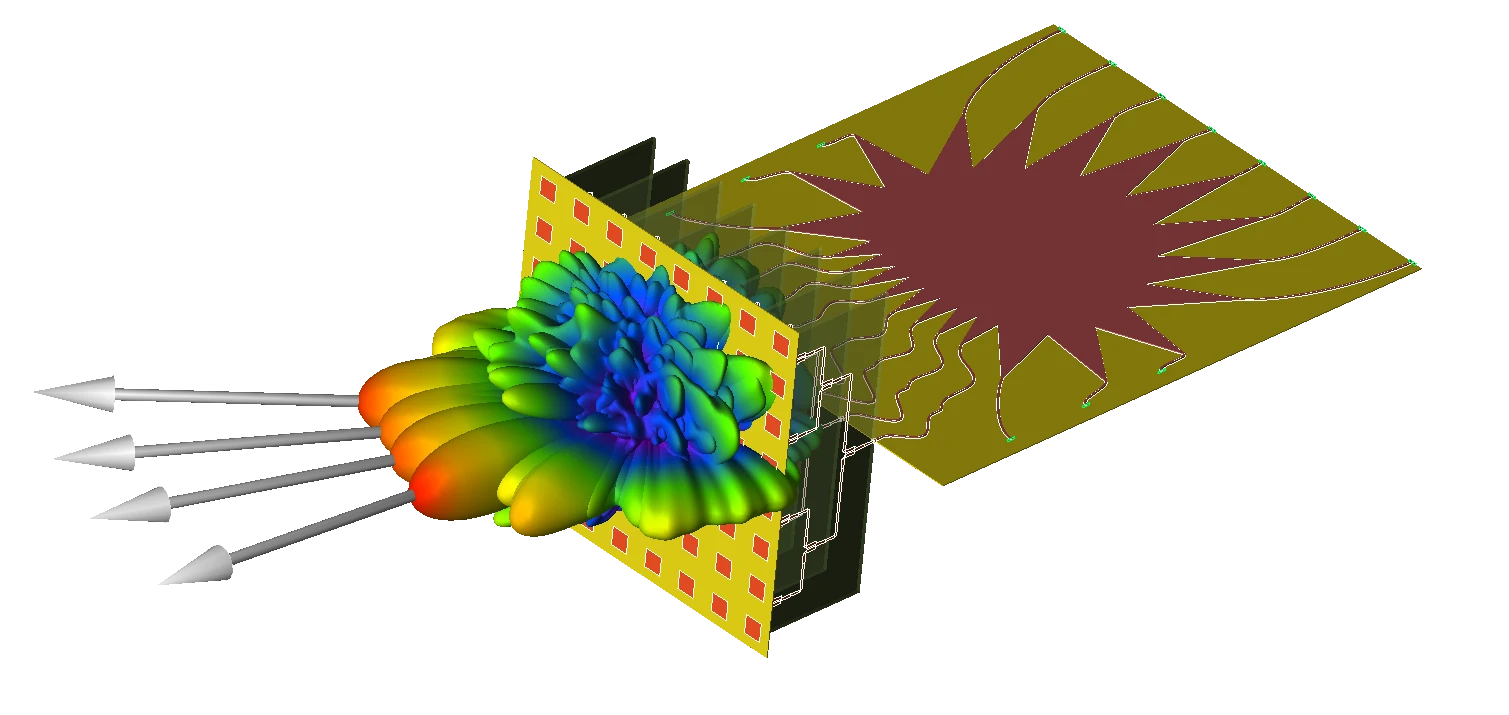
EM Simulation Software Demonstrations
Let a Remcom expert show you how our software can benefit your application.
XFdtd 3D EM Simulation Software Features
XF is full-wave 3D electromagnetic modeling software for analyzing EM field simulation in complex, high-fidelity devices.
XF's unique collection of features simplifies the analysis of even the most complex and massive problems.
XF includes a specialized FDTD solver which outpaces other methods in efficiency as the number of unknowns increases. Learn more about the benefits of the FDTD method.
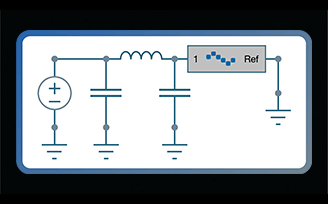
Frequency-Domain Circuit Solver and Schematic Editor
Build a matching network or corporate feed network and see its impact on full-wave results.
Read More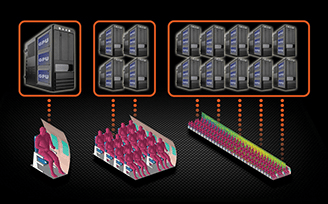
High Performance Computing Options
Improve electromagnetic simulation performance using the most modern high-performance computing technologies available.
Read More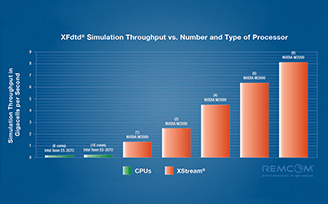
XStream® GPU Acceleration
Built-in EM simulation acceleration via GPUs. Combine with MPI technology for GPU clusters.
Read More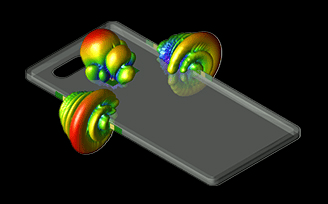
5G Array Analysis
Maximize 5G device performance with XF’s tools for optimizing radiation and beam steering characteristics of antenna arrays.
Read More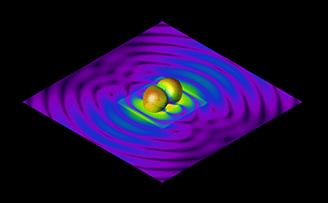
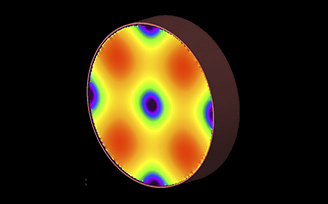
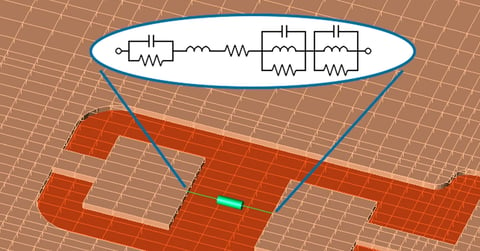
Transient EM/Circuit Co-Simulation
A SPICE-based circuit solver and full-wave FDTD solver are computed simultaneously.
Read More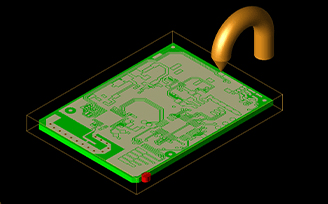
Dielectric Breakdown Prediction
Predict locations at risk of suffering dielectric breakdown with XF’s collection of ESD testing simulation tools.
Read More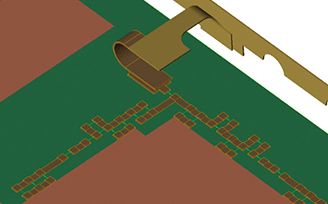
Circuit Element Optimizer
Determines optimal values for lumped circuit elements connected directly into the EM simulation mesh.
Read More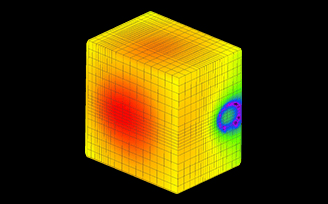
Huygens Surface
Accurately transfer antenna radiation characteristics for use outside XFdtd.
Read More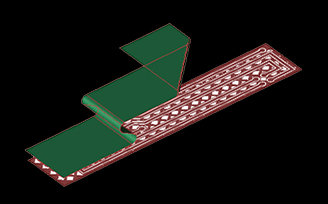
Wrapping Flexible PCB and 2D Sheets
Wrap a full, multi-layer flexible PCB design onto a form in one easy step, or wrap a sheet onto an arbitrarily shaped surface.
Read More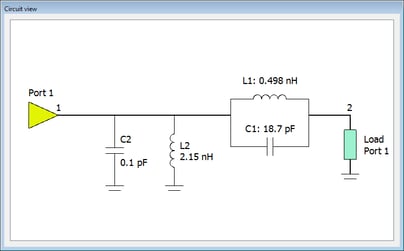
Optenni Lab Integration
Easily generate a matching network topology and initial component values for your device.
Read More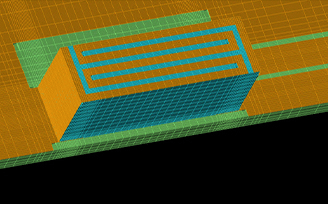
PrOGrid Project Optimized Gridding®
Simplifies grid creation by considering multiple aspects of a project to optimize the grid for both accuracy and runtime.
Read More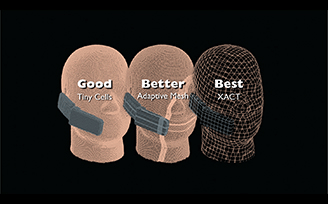
XACT Accurate Cell Technology®
Resolves the most intricate designs with fewer computational resources for faster, more accurate simulations.
Read More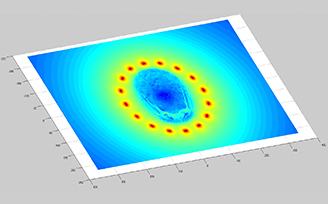
MATLAB Export Functionality
All data available through XF’s Result Browser can be exported to MATLAB and CSV formats.
Read More
Biological Thermal Sensor
For biomedical analyses, allows metals and other non-biological objects to be included in the temperature rise computation.
Read More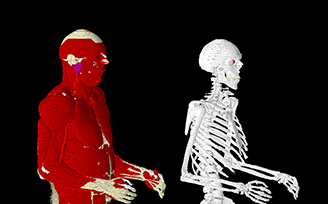

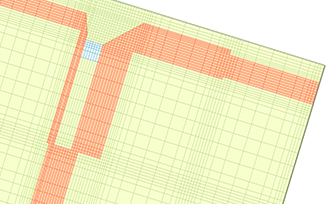
Simplified Workflow
XF streamlines your workflow by eliminating time-consuming, redundant tasks.
Read More
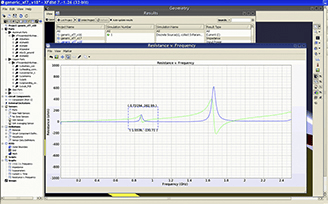
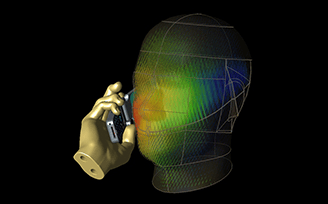
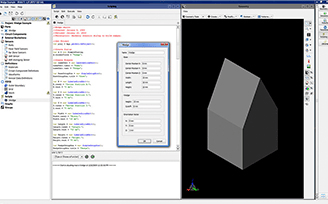
Custom Scripted Features
XF allows you to create your own custom features with a powerful scripting API.
Read More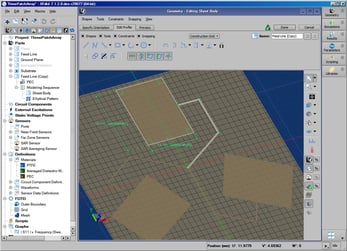
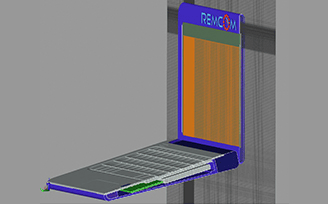
Fast Intelligent Meshing
XF makes it easier to generate more accurate and efficient meshes with less work.
Read MoreXFdtd Applications
A full-featured electromagnetic simulation solver, XFdtd 3D EM Simulation Software outpaces other methods in efficiency as the number of unknowns increases. XF includes full-wave, static, bio-thermal, optimization, and circuit solvers to tackle a wide variety of applications, including antenna design and placement, biomedical and SAR, EMI/EMC, microwave devices, radar and scattering, automotive radar, and more. It also works with Remcom's ray-tracing products to provide thorough simulation capability at the low-, middle-, and high-end of the electromagnetic spectrum.
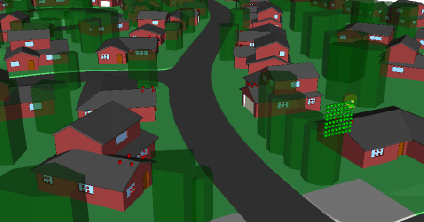
5G MIMO
Remcom’s EM simulation software provides a complete 5G solution, from system and MIMO antenna design through performance assessment in realistic, simulated environments, and planning for deployment in 5G networks. Our mission is to provide accurate solutions so customers can reliably predict how their systems will behave in the real world.
5G MIMO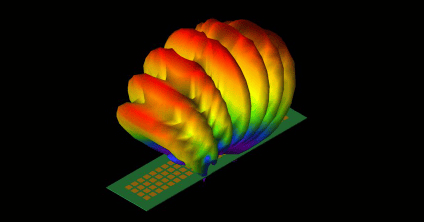
Antenna Design
Antenna technology is constantly advancing to meet the growing demands of industry. Likewise, Remcom has been keeping pace in order to provide engineers with antenna simulation software that matches their processes and helps them meet their device design requirements.
Antenna Design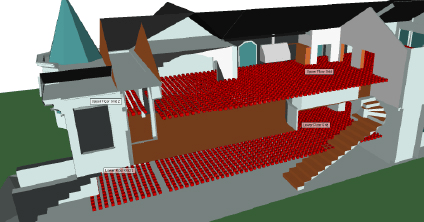
Antenna Placement
Remcom’s antenna modeling software tools ensure proper design and placement of antennas in almost any application. Our simulation tools can work alone or together for a complete analysis of how an antenna will perform.
Antenna Placement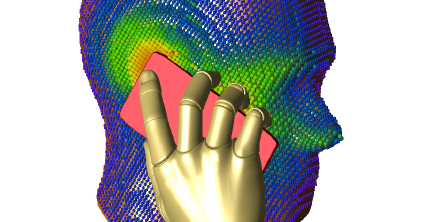
Mobile Device
Precision is key when designing today’s complex mobile devices, and engineers can’t afford discrepancies between device efficiency and simulation results. Remcom users see less than a 0.5 dB difference in device efficiency when compared to electromagnetic simulation results.
Mobile Device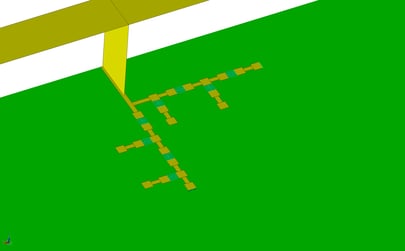
Matching Network Design
XFdtd includes several innovations that simplify matching network design, including a schematic editor and the Circuit Element Optimizer.
Matching Network Design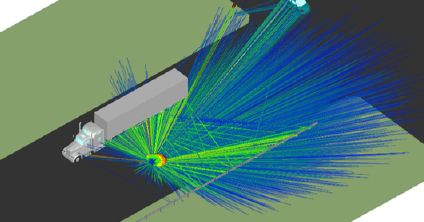
Automotive Radar
Simulation technology has advanced to meet more stringent design requirements for 24 GHz and 77 GHz automotive radar sensors including blind spot detection (BSD) and lane change assistance (LCA). Remcom offers an integrated approach from sensor design to drive test scenarios.
Automotive Radar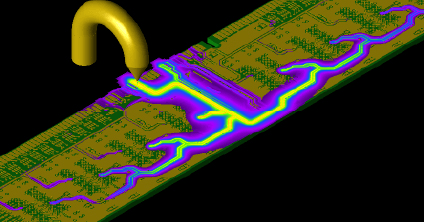
ESD Testing
Utilizing XFdtd's electrostatic discharge testing simulations allows engineers to pinpoint locations susceptible to ESD damage and optimize ESD mitigation during the concept and design stage of product development.
ESD Testing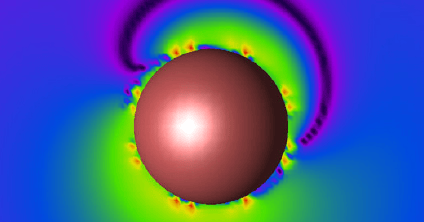
Metamaterials
XF supports simulations of devices containing metamaterials including negative index materials, electronic band gap structures, and frequency selective surfaces. Special materials including frequency dependent models, anisotropic and ferrite materials, and computational extensions to the FDTD method are also supported.
Metamaterials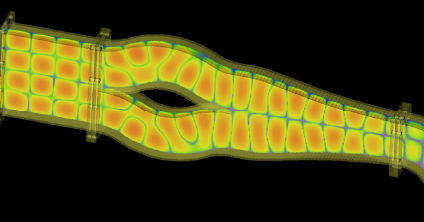
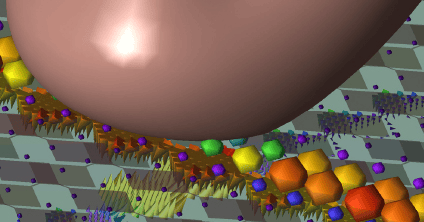
Touchscreen Capacitance
Capacitive sensors are commonly used as touchscreens to detect the location of fingers or a stylus on the screens of smart phones, tablets, computer screens, music players, and computer touch pads. XFdtd computes the capacitance of complex sensor designs, allowing designers to choose the best geometry for their needs without prototyping.
Touchscreen Capacitance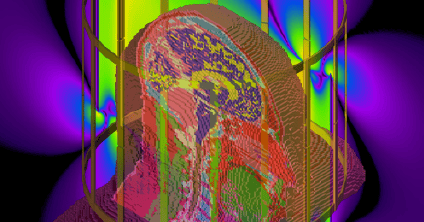
Biomedical
Remcom's EM simulation tools speed the design and certification process by allowing realistic simulations of device performance before the costly prototyping stage. Analysis options are both device-oriented, such as tuning, and bio-interaction related, including SAR. Realistic, posable human body models are available in addition to CAD-based SAM phantom.
Biomedical-

Webinars
Overview of XFdtd's Schematic Editor and Optimization for Matching Network Design
This webinar demonstrates the full range of features available to users, with a focus on recent updates that include optimization of component values, impedance and aperture tuners with tune codes, and system efficiency results.
Explore Resource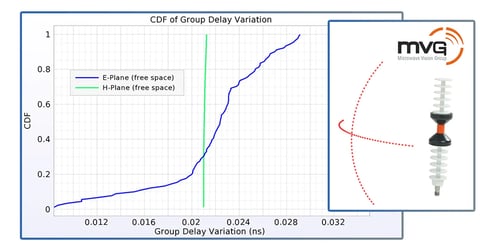
Webinars
Market Research Webinar: Group Delay for an Ultra Wide Band Antenna
In this webinar, XFdtd's product team discusses group delay for UWB antennas.
Explore Resource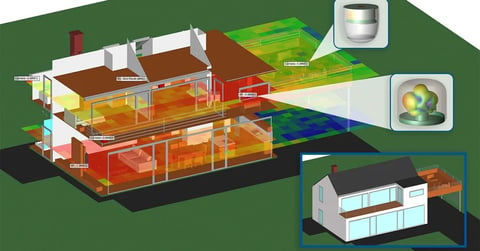
Webinars
Smart Home Device Design and WiFi Connectivity Using EM Simulation
This webinar demonstrates the strengths of Remcom’s XFdtd and Wireless InSite for designing and simulating smart home devices, analyzing propagation and beamforming capabilities, and assessing throughput performance of the devices via MIMO techniques.
Explore Resource -
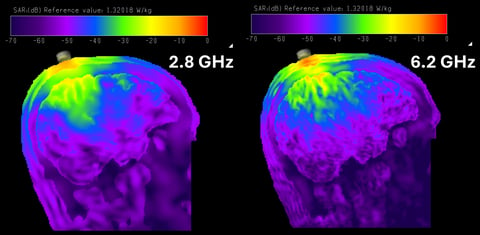
Application Examples
XFdtd SAR Simulations of a Mock Brain Computer Implant
This example shows Specific Absorption Rate (SAR) simulations for a first approximation Brain Computer Implant (BCI). It was generated using an open-source and anonymized data set of patient head models that includes five tissue compartments (scalp, skull, CSF, grey and white matter).
Explore Resource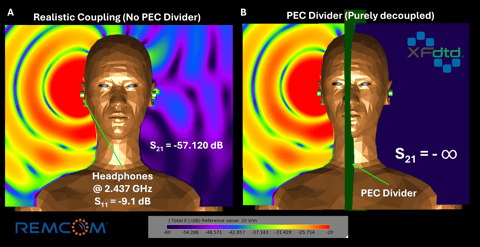
Application Examples
XFdtd Simulation of Electric Fields Between Two Headphones
Electric fields between two headphones travel around/through the human head. Four scenarios are simulated in XFdtd.
Explore Resource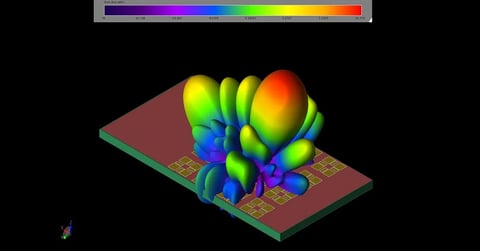
Application Examples
XFdtd Analysis of a Ku-band Satellite Antenna Array for Mobile Devices
In this example, a compact Ku-band antenna array is demonstrated for use in mobile device applications. The antenna is tuned for 12.5 GHz operation and contains a 4x4 array of elements which each consist of a set of patch antennas oriented and phased to produce a circularly-polarized far field pattern. The antenna array has peak gain over 20.7 dBi with sidelobes less than 8 dBi and a 3 dB beamwidth of about 15 degrees.
Explore Resource -
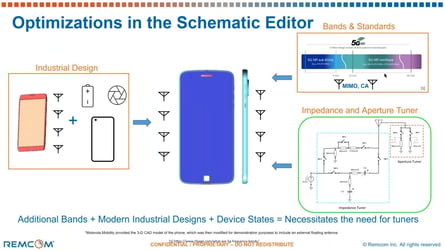
Videos
Impedance Tuner Matching in XFdtd
This presentation will demonstrate the advantages of using XFdtd for complex matching network design.
Explore Resource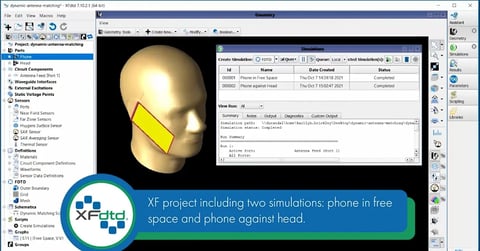
Videos
Dynamic Matched Antenna Using XFdtd’s Schematic Editor
In this video tutorial, an antenna's intrinsic impedance is simulated for two conditions--in free space and against a head. A three-port switch with two possible states is also included.
Explore Resource2.webp?width=480&height=251&name=maxresdefault%20(2)2.webp)
Videos
Tune a Tunable Matched Antenna Using XFdtd’s Schematic Editor
In this tutorial, we demonstrate the ease of adjusting or tuning, multiple operating modes so that capacitance values match various frequency bands. Using XF’s schematic editor with tuning slider bars, the correct values can be found in moments.
Explore Resource -
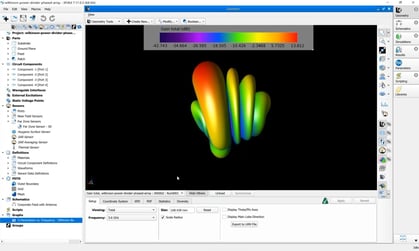
Publications
Mastering XFdtd’s Schematic Editor: A Comprehensive Overview
Dive into the capabilities of XFdtd’s schematic editor and discover how it transforms schematic creation, analysis, and optimization in engineering.
Explore Resource
Publications
Product Development Timeline of Firsts
Explore a timeline of XFdtd and Wireless InSite product development innovations.
Explore Resource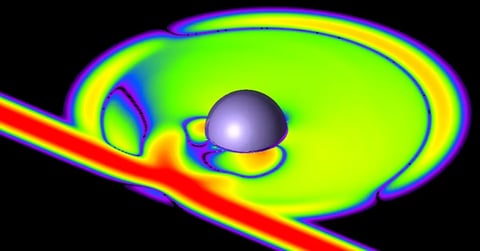
Publications
Technical Report: Simulation of Plasma Materials in XFdtd
This paper discusses the FDTD method to simulate the behavior of plasma materials using Remcom’s XFdtd 3D EM Simulation Software and presents validation in one- and three-dimensions.
Explore Resource -
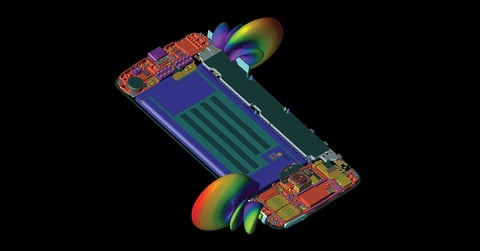
Brochures
XFdtd® 3D Electromagnetic Simulation Software Overview
XFdtd® is a full-featured EM simulation solver that simplifies the analysis of even the most complex and massive problems.
Explore Resource
Brochures
XFdtd® 3D Electromagnetic Simulation Software Brochure
Remcom provides electromagnetic simulation and site-specific radio propagation software for analyzing complex EM problems and antenna propagation. We empower design engineers with unique solutions for navigating today’s rapidly changing technologies.
Explore Resource
Brochures
VariPose® Brochure
VariPose® is a special purpose software tool that repositions the voxels of the Male Visible Human mesh including internal anatomical structures.
Explore Resource
XFdtd Specifications
XFdtd Capabilities
The following capabilities are available in XFdtd, however some are limited to Pro and MIMO versions of the product.
Contact us for additional capability information or to discuss your specific needs.
XF Key Capabilities
- Frequency-Domain Circuit Solver and Circuit Schematic Editor
-
XStream GPU Acceleration using NVIDIA’s CUDA architecture
-
XStream + Message Passing Interface (MPI) for GPU clusters
-
Wrap Flexible PCB
-
Circuit Element Optimizer
-
Superposition
-
Array Optimization
-
PrOGrid Project Optimized Gridding
-
XACT Accurate Cell Technology
-
XTend Script Library
-
Unlimited Memory
-
User-defined library containing Parts, Sources, Materials, and more
-
Full parameterization
-
Scripting interface with built-in editor
-
Macros
-
Waveguide Interfaces
-
Custom Project Templates
-
Feature-based modeling
-
Live-updating results
-
ESD Breakdown
-
Integrated mesh/CAD viewing
-
Volumetric/surface field saving via Sensors
-
Flexible customizable project tree
-
Simulation Queue
-
External Queue Integration (EQI)
-
Interactive graph manipulation
-
Real-time error checking with feedback
-
Automatic mesh fixed-point detection
-
Native multi-platform UI on Windows and Linux
Materials
-
Dispersive Material Calculator
-
Time dependent material
-
Materials database populated with more than 350 material definitions
-
Diagonally anisotropic electric/magnetic
-
Lossy dielectric/magnetic
-
Frequency-dependent dielectric/magnetic
-
Anisotropic magnetized ferrite
-
Anisotropic dielectric (full tensor)
-
Non-linear dielectric/magnetic
-
Thin wires with different radii
-
Surface roughness for metals
-
Dielectric Breakdown
Far-Zone Results
-
Transient far-zone - specific angles
-
Steady state 3D far-zone patterns
-
Ludwig and axial ratio polarization results
-
Radar cross section
-
Advanced antenna pattern analysis/antenna over ground plane
-
Antenna diversity, including independent PDFs for E_phi and E_theta
-
Circular polarization
Sources/Loads/Ports
-
Electrostatic Solver
-
Waveguide Interfaces - both modal and nodal
-
Passive loads with Series, Parallel, and RL Parallel C layouts
-
Passive linear and nonlinear loads based on SPICE netlist file
-
Multiple excitation types can be used within one simulation
-
Arbitrary time domain waveforms
-
Automatic waveform based on Frequency Range of Interest
-
Voltage/current sources with series/parallel RLC
-
Voltage/Current sources with matching network based on SPICE netlist file
-
Non-linear capacitors
-
Time-controlled on-off switches
-
Diodes
-
Photo conductive semiconductor switch
-
Incident plane wave with linear, circular, or elliptical polarization -both total and scattered
-
Gaussian beam
-
Specify time delay for each individual source
Acceleration Options
-
XStream GPU Acceleration using NVIDIA’s CUDA architecture for single or multiple GPUs
-
XStream + Message Passing Interface (MPI) for GPU clusters
-
MPI multiprocessor (distributed memory clusters)
-
Multiprocessor threading for unlimited cores
-
External Queue Integration (EQI)
-
Failure detection of GPU memory
Geometry Generation
-
3D solid modeler
-
2D Sketcher with constraints
-
Feature-based modeling
-
Poseable Hand to grip hand-held devices
-
Arbitrary extrudes, revolves, sheets, and wire bodies
-
Complex geometry modification of created and imported geometries:
-
Wrap
-
Booleans
-
Chamfer edges
-
Blend edges
-
Shell solids
-
Remove faces
-
Offset faces and sheet edges
-
Remove holes
-
Thicken sheets
-
Loft
-
Stretch
-
Twist
-
Slice
-
Bend solid geometry
-
Project a sheet
-
Scale/translate/rotate/reflect/shear
-
Linear and circular patterns
-
-
Primitive geometric shapes:
-
Sphere
-
Cylinder
-
Cone
-
Cuboid
-
Torus
-
Pyramid
-
Prism
-
Frustum
-
Helix
-
-
Locators to easily reposition geometries
-
Cutting plane to reveal inner structure
Special Capabilities/Options
-
Periodic outer boundary condition
-
Sinusoidal results at multiple frequencies via DFT
-
Scaling of sinusoidal results
-
Automatic convergence with delay options
-
Materiel, circuit component definition, encryption, and geometry
-
Huygens surface sensor
CAD Import/Export
-
Import ODB++ PCB files with arbitrary wrap
-
Import BRD PCB files with arbitrary wrap
-
Import ODB++ PCB files with arbitrary crop
-
Import BRD PCB files with arbitrary crop
-
Import Poseable Hand
-
Import SAT/SAB files
-
Import DXF files
-
Import VDA-FS files
-
Import STL files
-
Import STEP files
-
Import IGES files
-
Import Pro-E files
-
Import CATIA V4 and V5 files
-
Import Inventor files
-
Export to SAT files
-
Export to STEP file
-
Export to IGES file
-
Export to CATIA file
-
Export to STL file
-
Export to DXF file
-
Editing of imported CAD objects
-
CAD Merge: Retention of previous modifications when importing geometry updates
Graphical Output
-
Dissipated Power Density
-
Near zone fields/currents vs. time
-
Impedance, S-Parameters vs. frequency, VSWR, Active VSWR
-
Polar plot antenna patterns
-
Smith chart impedance plots
-
FFT of transient results
-
Group Delay output type
-
Time Domain Reflectometry (TDR) and Time Domain Transmission (TDT) output types
-
Cumulative distribution function (CDF) of steady-state farzone results
Meshing/Viewing
-
Dielectric Volume Averaging
-
XACT Accurate Cell Technology
-
Fast meshing algorithm (FMA)
-
Cropped 3D mesh
-
Automatic/manual control of mesh parameters
-
Adaptive mesh
-
Fast 3D mesh viewing
-
Multithreaded meshing
-
Prevent objects from touching in the mesh
Discrete Frequency Statistics
-
Radiation efficiency
-
System efficiency
-
Dissipated power
-
Component loss
-
Net input power
-
Net available power
-
Stand alone radiation efficiency
Visual Output
-
Planes, surfaces and volumes of output shown with input geometry
-
E/H/B, conduction current, surface current, rotating B near fields, in addition to dissipated power density
-
3D far field patterns of E, gain, realized gain, axial ratio, radar cross section, effective isotropically radiate power (EIRP)
-
Hearing aid compatibility, SAR, MR transmit efficiency, and approximate MR image outputs
-
Biological temperature rise
-
Temperature distribution: initial, final, and temperature increase
-
E, H, power density on Huygens surface
Output Export
-
Movies (*.avi): planar and volumetric field sequences
-
MATLAB: all data exportable
-
Comma separated value files (*.csv): all data exportable
-
Optenni: S-parameters and efficiency
-
Touchstone files (for example, *.s2p): S-parameters
-
CITI files: S-parameters
-
Huygens surface
Biological Features
-
Specific absorption rate (SAR)
-
Biological Thermal Sensor
-
Birdcage Tool
-
MR Transmit Efficiency (proportional to signal-to-noise ratio)
-
Approximate MR Image
-
B1+/B1- Fields
-
Combined SAR results from multiple simulations
-
Calculate 1- and 10-gram SAR averages
-
Whole body SAR average
-
Location of peak SAR
-
Adjust SAR levels for specified input power or current
-
Planes of SAR for color display
-
SAM head CAD file
-
Hearing aid compatibility (HAC)
-
Head and body meshes at various resolutions
-
Frequency-dependent body tissue parameters
-
VariPose® to reposition body meshes
-
ICRP, NICT and Virtual Population voxel models supported
-
Automatic assignment of correct biological materials to all imported voxel types
-
SAR statistics reporting (mass, dissipated power, mean SAR over regions)
-
Power density
Schematics
-
Schematic editor
- Optimization of component values
-
Analysis Workbench with tuning sliders
-
Components
-
Subcircuits
-
Voltage source
-
Resistor
-
Inductor, ideal and lossy
-
Capacitor, ideal and lossy
-
Switch
-
Phase shifter
-
Netlist
-
SnP block
-
FDTD block
-
Ideal Transmission Line
-
Microstrip Transmission Line
-
Microstrip Tee
-
Microstrip Bend
-
Microstrip Step
-
Coplanar Waveguide
-
Grounded Coplanar Waveguide
-
-
Operating modes
-
Multi-port & multi-state devices
-
Circuit solver
-
Ability to apply schematic to full-wave results
XFdtd Versions Comparison
System Requirements
1. For specific details, please visit NVIDIA's website at https://www.nvidia.com/en-us/data-center/data-center-gpus/
GUI - Supported Platforms:
- Microsoft Windows 10 and 11, 64-bit
- Red Hat Enterprise Linux 7 and 8, Ubuntu 18, 64-bit (and compatible systems)
Computation Engine - Supported Platforms:
- Microsoft Windows 10 and 11, 64-bit
- Red Hat Enterprise Linux 7 and 8, Ubuntu 18, 64-bit (and compatible systems)
- Inquire for other platform availability.
The MPI module is available for the following platforms:
- Open MPI on Red Hat Enterprise Linux 7 and 8, Ubuntu 18, 64-bit (and compatible systems)
- Inquire for other platform availability.
NVIDIA Cloud Validated
- NVIDIA GPU Operator 23.3.2 or newer is required to take full advantage of NVIDIA Cloud Validated features.
- NVIDIA Driver 450 or newer is required to take full advantage of NVIDIA Cloud Validated features.
© 2023 NVIDIA and the NVIDIA logo are trademarks and/or registered trademarks of NVIDIA Corporation in the U.S. and other countries.
XFdtd References
The following is a list of scientific and technical articles in which Remcom's software was used in the authors' research. We've included excerpts from the publication abstracts and offsite links to the original published content.
Cosmic Rays and the Askaryan Effect Reveal Subsurface Structure and Buried Ice on the Moon
We present the first full-wavelength numerical simulations of the electric field generated by cosmic ray impacts into the Moon. Billions of cosmic rays fall onto the Moon every year. Ultra-high energy cosmic ray impacts produce secondary particle cascades within the regolith and subsequent coherent, widebandwidth, linearly-polarized radio pulses by the Askaryan Effect. Observations of the cosmic ray particle shower radio emissions can reveal subsurface structure on the Moon and enable the broad and deep prospecting necessary to confirm or refute the existence of polar ice deposits. Our simulations show that the radio emissions and reflections could reveal ice layers as thin as 10 cm and buried under regolith as deep as 9 m. The Askaryan Effect presents a novel and untapped opportunity for characterizing buried lunar ice at unprecedented depths and spatial scales.
The influence of eyelashes on electric field distribution and absorbed power density in the cornea under millimeter-wave exposure
As millimeter wave (MMW) technology, particularly in fifth-generation (5G) devices, gains prominence, there is a crucial need for comprehensive electromagnetic (EM) models of ocular tissues to understand and characterize EM exposure conditions accurately. This study employs numerical modeling to investigate the interaction between MMW and the cornea, aiming to characterize EM field distributions and absorption within an anatomically accurate eye model while considering the influence of eyelashes. Using the finite-difference time-domain (FDTD) method, we conduct simulations of EM radiation interactions from 20.0 to 100.0 GHz with a human eye model. Moreover, we analyze the temperature distribution increase within the eye model using a thermal sensor in XFdtd, employing a scheme based on the finite difference (FD) method. Our findings reveal a nonuniform distribution of the EM field, particularly intensified in corneal regions adjacent to eyelashes and eyelids. Despite similar EM field patterns, the presence or absence of eyelashes has minimal impact on temperature differences. However, the study highlights increased radiation absorption by the eyelid's epidermis at 100.0 GHz, reducing the rise in the cornea's temperature.
Foroughimehr
Design of Antennas from Primitive Shapes Using Genetic Algorithms
The thermal sensation threshold and its reliability induced by the exposure to 28 GHz millimeter-wave
The application of 28 GHz millimeter-wave is prevalent owing to the global spread of fifth-generation wireless communication systems. Its thermal effect is a dominant factor which potentially causes pain and tissue damage to the body parts exposed to the millimeter waves. However, the threshold of this thermal sensation, that is, the degree of change in skin temperature from the baseline at which the first subjective response to the thermal effects of the millimeter waves occurs, remains unclear. Here, we investigated the thermal sensation threshold and assessed its reliability when exposed to millimeter waves. Twenty healthy adults were exposed to 28 GHz millimeter-wave on their left middle fingertip at five levels of antenna input power: 0.2, 1.1, 1.6, 2.1, and 3.4 W (incident power density: 27–399 mW/cm2). This measurement session was repeated twice on the same day to evaluate the threshold reliability. The intraclass correlation coefficient (ICC) and Bland–Altman analysis were used as proxies for the relative and absolute reliability, respectively. The number of participants who perceived a sensation during the two sessions at each exposure level was also counted as the perception rate. Mean thermal sensation thresholds were within 0.9°C–1.0°C for the 126–399 mW/cm2 conditions, while that was 0.2°C for the 27 mW/cm2 condition. The ICCs for the threshold at 27 and 126 mW/cm2 were interpreted as poor and fair, respectively, while those at higher exposure levels were moderate to substantial. Apart from a proportional bias in the 191 mW/cm2 condition, there was no fixed bias. All participants perceived a thermal sensation at 399 mW/cm2 in both sessions, and the perception rate gradually decreased with lower exposure levels. Importantly, two-thirds of the participants answered that they felt a thermal sensation in both or one of the sessions at 27 mW/cm2, despite the low-temperature increase. These results suggest that the thermal sensation threshold is around 1.0°C, consistent across exposure levels, while its reliability increases with higher exposure levels. Furthermore, the perception of thermal sensation may be inherently ambiguous owing to the nature of human perception.
The impact of variations in subject geometry, respiration and coil repositioning on the specific absorption rate in parallel transmit abdominal imaging at 7 T
Parallel transmit MRI at 7 T has increasingly been adopted in research projects and provides increased signal-to-noise ratios and novel contrasts. However, the interactions of fields in the body need to be carefully considered to ensure safe scanning. Recent advances in physically flexible body coils have allowed for high-field abdominal imaging, but the effects of increased variability on energy deposition need further exploration. The aim of this study was to assess the impact of subject geometry, respiration phase and coil positioning on the specific absorption rate (SAR). Ten healthy subjects (body mass index [BMI] = 25 ± 5 kg m−2) were scanned (at 3 T) during exhale breath-hold and images used to generate body models. Seven of these subjects were also scanned during inhale. Simplifications of the coil and body models were first explored, and then finite-difference time-domain simulations were run with a typical eight-channel parallel transmit coil positioned over the abdomen. Simulations were used to generate 10 g averaged SAR (SAR10g) maps across 100,000 phase settings, and the worst-case scenario 10 g averaged SAR (wocSAR10g) was identified using trigonometric maximisation. The average maximum SAR10g across the 10 subjects with 1 W input power per channel was 1.77 W kg−1. Hotspots were always close to the body surface near the muscle wall boundary. The wocSAR10g across the 10 subjects ranged from 2.3 to 3.2 W kg−1 and was inversely correlated to fat volume percentage (R = 8) and BMI (R = 0.6). The coefficient of variation values in SAR10g due to variations in subject geometry, respiration phase and realistic coil repositioning were 12%, 4% and 12%, respectively. This study found that the variability due to realistic coil repositioning was similar to the variability due to differing healthy subject geometries for abdominal imaging. This is important as it suggests that population-based modelling is likely to be more useful than individual modelling in setting safe thresholds for abdominal imaging.
Dual-Channel Transverse Fields Radiofrequency Coils for 1.5 T Magnetic Resonance Imaging
This theoretical study presents the design and analytical/numerical optimization of novel dual-channel transverse fields radiofrequency (RF) surface coils for 1.5 T Magnetic Resonance Imaging (MRI). The research explores a planar setup with two channels on a row with aligned spatial orientation of the RF coils, aiming to solve a common design drawback of single-channel transverse field RF coils: the reduced Field Of View (FOV) along the direction of the RF field. A significant challenge in this design is the efficient decoupling of two sets of transverse field RF coils to prevent mutual interference. Our modeling approach integrates thin wire theoretical modeling, magnetostatic computation for strip conductor coils, and their full-wave electromagnetic simulation. Key findings at 64 MHz demonstrate that strategic geometric placement among the two-channel RF coil and the introduction of geometrical asymmetry in the design of the individual RF coils does minimize the mutual inductance, paving the way for effective dual-channel MRI applications. This decoupling approach allows to enhance the FOV, providing a theoretical framework for the development of optimized dual-channel transverse field RF coil configurations. The current design was validated with full-wave numerical study at 64 MHz (1H, 1.5 T), has the potential to be extended at lower or higher frequencies, and the presence of lossy samples needs to be considered in the latter case.
The Effects of mmW and THz Radiation on Dry Eyes: A Finite-Difference Time-Domain (FDTD) Computational Simulation Using XFdtd
The importance of investigating the health effects of RF radiation on the cornea cannot be overstated. This study aimed to address this need by utilizing a mathematical simulation to examine the absorption of millimeter wave (mmW) and terahertz (THz) waves by the cornea, considering both normal and pathological conditions.
Foroughimehr N, Vilagosh Z, Yavari A, Wood A. The Effects of mmW and THz Radiation on Dry Eyes: A Finite-Difference Time-Domain (FDTD) Computational Simulation Using XFdtd. Sensors. 2023; 23(13):5853.
Research on Near-Field Propagation Characteristics of Partial Discharge Electromagnetic Wave Signal in Switchgear
The content of this paper is the continuation of the authors’ previous research. In order to realize the reasonable layout of the near-field magnetic field probe for partial discharge detection in the switchgear, this paper simulates and analyzes the influence of the internal structure of the switchgear on the near-field propagation characteristics of the electromagnetic wave signal generated by partial discharge, and determines the installation position of the near-field probe in the switchgear. Firstly, the propagation characteristics of electromagnetic wave signals in the different media of the switchgear are analyzed, and the switchgear model is established. Then, based on the finite difference time domain method, the influence of different devices in the switchgear on the near-field propagation of the partial discharge electromagnetic wave signal is simulated. The simulation results show that the current transformer, insulator, busbar and cabinet all obviously attenuate the amplitude of the near-field electromagnetic wave signals generated by partial discharge, and the insulator causes obvious signal distortion. Finally, it is determined that the near-field probe can be installed on the inner wall or the right wall near the bottom plate of the switchgear.
Suo C, Zhao J, Wang L, Xu Z, Luo R, He M, Zhang W. Research on Near-Field Propagation Characteristics of Partial Discharge Electromagnetic Wave Signal in Switchgear. Energies. 2023; 16(8):3372.
Physical behavior of PEDOT polymer electrode during magnetic resonance imaging and long-term test in the climate chamber
The PEDOT polymer electrode is a metal-free electrode, consisting of an acrylate (dental composite) and the conductive polymer poly(3,4-ethylenedioxythiophene) polystyrene sulfonate (PEDOT:PSS). The electrode is applied as gel onto the skin and cured with blue light for 10–20 s in order to achieve a conductive bond to the skin. The electrodes are used in combination with polymer cables consisting of a textile backbone and PEDOT:PSS. To test this new electrode and cable type under different conditions we designed two stress-tests: highly sensitive temperature recordings within a head phantom during Magnetic Resonance Imaging (MRI) and long-term stability inside a climate chamber with high humidity. To study the physical behavior inside the strong magnetic field (3 Tesla), the PEDOT polymer electrode was attached to an agarose head-phantom inside a magnetic resonance tomograph during an image sequence. MRI-safe temperature sensors were placed nearby in order to measure possible heating effects. In comparison to a metal cable, nearly no rise in temperature could be observed if the electrode was used in combination with a conductive textile cable. Furthermore, the electrode showed stable impedance values inside a climate chamber for 4 consecutive days. These results pave the way for testing the PEDOT polymer electrode as biosignal recording electrode during MRI, especially for cardio MRI and Electroencephalography in combination with functional MRI (EEG–fMRI).
de Camp, N.V., Bergeler, J. & Seifert, F. Physical behavior of PEDOT polymer electrode during magnetic resonance imaging and long-term test in the climate chamber. Sci Rep 13, 5826 (2023).
Electromagnetic Wave Absorption in the Human Head: A Virtual Sensor Based on a Deep-Learning Model
In this paper, the surrogate model of electromagnetic wave absorption in human body, utilizing Deep-Learning, is proposed. In particular, a family of data from finite-difference time-domain analyses makes it possible to train a Convolutional Neural Network (CNN), in view of recovering the average and maximum power density in the cross-section region of the human head at the frequency of 3.5 GHz. The developed method allows for quick determination of the average and maximum power density for the area of the entire head and eyeball areas. The results obtained in this way are similar to those obtained by the method based on Maxwell’s equations.
Di Barba P, Januszkiewicz Ł, Kawecki J, Mognaschi ME. Electromagnetic Wave Absorption in the Human Head: A Virtual Sensor Based on a Deep-Learning Model. Sensors. 2023; 23(6):3131.
FDTD Simulations of Sweat Ducts and Hair at 0.45 THz
Advances in Terahertz frequency electromagnetic radiation (THz) production technologies have produced an increasing interest in exploring possible applications. New applications will inevitably lead to increased incidental interaction of humans with THz radiation. Given that the wavelength of THz radiation is in the same order of magnitude as the dimensions of skin structures such as hair and sweat ducts, the possibility of interaction among these structures is of interest. The interaction was studied utilizing Finite Difference Time Domain (FDTD) simulations using a far-field excitation of 0.45 THz. No antenna-like effects were detected. Regions of increased specific absorption rate (SAR) due to reactive near-field effects with both the hair and sweat ducts were found in the order of 0.01–0.05 mm and 0.001–0.002 mm, respectively. Simulations using unwound sweat ducts yielded the same penetration pattern as the helical structure, indicating that the helical structure has no impact on the propagation of THz radiation in skin.
Vilagosh Z, Foroughimehr N, Lajevardipour A, Wood AW. FDTD Simulations of Sweat Ducts and Hair at 0.45 THz. Dermato. 2023; 3(1):69-84.
Localization of Wireless Capsule Endoscopes Using the Receiver Selection Algorithm and a Modified Capsule Antenna
Wireless capsule endoscopes capture and transmit images of the human gastrointestinal tract for use in medical diagnosis. The localization of the capsule makes it possible to precisely identify areas with lesions detected during the examination. The antenna is an important element of the endoscopic capsule that is used for the transmission of the signal containing the recorded image of the inside of the digestive system. Antenna parameters influence also the performance of algorithms that are locating capsule endoscopes based on the analysis of the received signal. The zig-zag conformal antenna for the endoscope capsule is presented in this paper. It was examined both in simulation and tissue simulant liquid. It is then applied to an improved localization system that is based on phase difference analysis of received signals. In this new approach, the algorithm selects five external receivers from the predefined set and uses an adaptive estimation of human body model permittivity. The localization algorithm was verified with computer simulations. Remcom XFdtd software and both simplified and heterogeneous human body models were applied in simulations. The technique which uses automatic selection of the external receiver together with proposed antenna enhanced localization accuracy by about 15% compared with the previous version of this algorithm.
Oleksy P, Januszkiewicz Ł. Localization of Wireless Capsule Endoscopes Using the Receiver Selection Algorithm and a Modified Capsule Antenna. Electronics. 2023; 12(4):784.
Eye Shielding against Electromagnetic Radiation: Optimal Design Using a Reduced Model of the Head
This article presents the design process of a structure that shields the electromagnetic field from the fifth-generation transmitter operating in the 3.5 GHz band. The purpose of this project is the limitation of power density in the eye region. For this reason, the structure is made of conducting wires forming a grid that is semitransparent to the light. The design was performed using computer simulations with a finite-difference time-domain method and an evolutionary-based optimization methodology. A simplified model of the face and eyes was developed to reduce the amount of time needed for the simulation. The construction of the shielding structure presented here can be easily fabricated in the form of protective goggles. The results of the computer simulations show that the power density in the eye region can be reduced by almost seven times compared with the unshielded case.
Kawecki J, Januszkiewicz Ł, Di Barba P, Kropidłowski K. Eye Shielding against Electromagnetic Radiation: Optimal Design Using a Reduced Model of the Head. Electronics. 2023; 12(2):291.
Radiofrequency Coils for Low-Field (0.18–0.55 T) Magnetic Resonance Scanners: Experience from a Research Lab–Manufacturing Companies Cooperation
In this paper, the authors describe how the choice of electrical parameters (such as conductor geometry and capacitor quality) affects the coil’s overall performance in terms of the quality factor Q, ratio between unloaded and loaded Q, and coil sensitivity. Subsequently, we will summarize the work carried out at our electromagnetic laboratory in collaboration with MR-manufacturing companies in the field of RF coil design, building, and testing for 0.18–0.55 T magnetic resonance (MR) clinical scanners by classifying them between surface-, volume-, and phased-array coils.
Giovannetti G, Frijia F, Flori A. Radiofrequency Coils for Low-Field (0.18–0.55 T) Magnetic Resonance Scanners: Experience from a Research Lab–Manufacturing Companies Cooperation. Electronics. 2022; 11(24):4233.
The Impact of Base Cell Size Setup on the Finite Difference Time Domain Computational Simulation of Human Cornea Exposed to Millimeter Wave Radiation at Frequencies above 30 GHz
This study demonstrates the variation of the accuracy of the FDTD computational simulation system when different meshing sizes are used, by using the interaction of the critically sensitive human cornea with EM in the 30 to 100 GHz range. Different approaches of base cell size specifications were compared. The accuracy of the computation is determined by applying planar sensors showing the detail of electric field distribution as well as the absolute values of electric field collected by point sensors. It was found that manually defining the base cell sizes reduces the model size as well as the computation time. However, the accuracy of the computation decreases in an unpredictable way. The results indicated that using a cloud computing capacity plays a crucial role in minimizing the computation time.
Foroughimehr N, Vilagosh Z, Yavari A, Wood A. The Impact of Base Cell Size Setup on the Finite Difference Time Domain Computational Simulation of Human Cornea Exposed to Millimeter Wave Radiation at Frequencies above 30 GHz. Sensors. 2022; 22(15):5924.
Beam Alignment for the Cell-Free mmWave Massive MU-MIMO Uplink
Millimeter-wave (mmWave) cell-free massive multiuser (MU) multiple-input multiple-output (MIMO) systems combine the large bandwidths available at mmWave frequencies with the improved coverage of cell-free systems. However, to combat the high path loss at mmWave frequencies, user equipments (UEs) must form beams in meaningful directions, i.e., to a nearby access point (AP). At the same time, multiple UEs should avoid transmitting to the same AP to reduce MU interference. They propose an interference-aware method for beam alignment (BA) in the cell-free mmWave massive MU-MIMO uplink. In the considered scenario, the APs perform full digital receive beamforming while the UEs perform analog transmit beamforming. They evaluate our method using realistic mmWave channels from a commercial ray-tracer, showing the superiority of the proposed method over omnidirectional transmission as well as over methods that do not take MU interference into account.
Beam Alignment in mmWave User-Centric Cell-Free Massive MIMO Systems 2021 IEEE Global Communications Conference (GLOBECOM)2021
S. BuzziCarmen D’AndreaMaria FresiaXiaofeng Wu
Design and Initial Performance of the Prototype for the BEACON Instrument for Detection of Ultrahigh Energy Particles
The Beamforming Elevated Array for COsmic Neutrinos (BEACON) is a planned neutrino telescope designed to detect radio emission from upgoing air showers generated by ultrahigh energy tau neutrino interactions in the Earth. This detection mechanism provides a measurement of the tau flux of cosmic neutrinos. They have installed an 8-channel prototype instrument at high elevation at Barcroft Field Station, which has been running since 2018, and consists of 4 dual-polarized antennas sensitive between 30-80 MHz, whose signals are filtered, amplified, digitized, and saved to disk using a custom data acquisition system (DAQ). The BEACON prototype is at high elevation to maximize effective volume and uses a directional beamforming trigger to improve rejection of anthropogenic background noise at the trigger level. Here we discuss the design, construction, and calibration of the BEACON prototype instrument. They also discuss the radio frequency environment observed by the instrument, and categorize the types of events seen by the instrument, including a likely cosmic ray candidate event.
Design and performance of an interferometric trigger array for radio detection of high-energy neutrinos, Nuclear Instruments and Methods in Physics Research Section A: Accelerators, Spectrometers Detectors And Associated Equipment 2019
A Practical Guide to Estimating Coil Inductance for Magnetic Resonance Applications
This paper describes and compares two different procedures for coil inductance estimation to allow for a fast coil-prototyping process. The first method, based on calculations in the quasi-static approximation, permits an investigation on how the cross-sectional geometry of the RF coil conductors affects the total inductance and can be easily computed for a wide variety of coil geometries. The second approach uses a numerical full-wave method based on the Finite-Difference Time-Domain (FDTD) algorithm, and permits the simulation of RF coils with any complex geometry, including the case of multi-element phased array. Comparison with workbench measurements validates both the analytical and numerical results for RF coils operating within a wide field range (0.18–7 T).
Giovannetti G, Frijia F, Flori A, Galante A, Rizza C, Alecci M. A Practical Guide to Estimating Coil Inductance for Magnetic Resonance Applications. Electronics. 2022; 11(13):1974.
Fully Textile Dual-Band Logo Antenna for IoT Wearable Devices
In this paper, a fully textile dual-band logo antenna integrated with a reflector for application in IoT wearable devices is proposed. The proposed antenna’s radiating elements have been shaped to mimic the logo of South-West University “Neofit Rilski” for an unobtrusive integration in accessories. A reflector has been mounted on the opposite side of the textile substrate to reduce the radiation from the wearable antenna and improve its robustness against the loading effect from nearby objects. Two antenna prototypes were fabricated and tested in free space as well as on three different objects (human body, notebook, and laptop). Moreover, in the two frequency ranges of interest a radiation efficiency of 25–38% and 62–90% was achieved. Moreover, due to the reflector, the maximum local specific-absorption rate, which averaged over 10 g mass in the human-body phantom, was found to be equal to 0.5182 W/kg at 2.4 GHz and 0.16379 W/kg at 5.47 GHz. Additionally, the results from the performed measurement-campaign collecting received the signal-strength indicator and packet loss for an off-body scenario in real-world use, demonstrating that the backpack-integrated antenna prototype can form high-quality off-body communication channels.
Atanasova GL, Atanasov BN, Atanasov NT. Fully Textile Dual-Band Logo Antenna for IoT Wearable Devices. Sensors. 2022; 22(12):4516.
Wireless Capsule Endoscope Localization with Phase Detection Algorithm and Adaptive Body Model
Wireless capsule endoscopes take and send photos of the human digestive tract, which are used for medical diagnosis. The capsule’s location enables exact identification of the regions with lesions. This can be carried out by analyzing the parameters of the electromagnetic wave received from the capsule. Because the human body is a complex heterogeneous environment that impacts the propagation of wireless signals, determining the distance between the transmitter and the receiver based on the received power level is challenging. An enhanced approach of identifying the location of endoscope capsules using a wireless signal phase detection algorithm is presented in this paper. For each capsule position, this technique uses adaptive estimation of human body model permittivity. This approach was tested using computer simulations in Remcom XFdtd software using a numerical, heterogeneous human body model, as well as measurements with physical phantom.
Oleksy P, Januszkiewicz Ł. Wireless Capsule Endoscope Localization with Phase Detection Algorithm and Adaptive Body Model. Sensors. 2022; 22(6):2200.
Changes in the excitability of primary hippocampal neurons following exposure to 3.0 GHz radiofrequency electromagnetic fields
Exposures to radiofrequency electromagnetic fields (RF-EMFs, 100 kHz to 6 GHz) have been associated with both positive and negative effects on cognitive behavior. To elucidate the mechanism of RF-EMF interaction, a few studies have examined its impact on neuronal activity and synaptic plasticity. However, there is still a need for additional basic research that further our understanding of the underlying mechanisms of RF-EMFs on the neuronal system. The present study investigated changes in neuronal activity and synaptic transmission following a 60-min exposure to 3.0 GHz RF-EMF at a low dose (specific absorption rate (SAR) < 1 W/kg). The authors showed that RF-EMF exposure decreased the amplitude of action potential (AP), depolarized neuronal resting membrane potential (MP), and increased neuronal excitability and synaptic transmission in cultured primary hippocampal neurons (PHNs). The results show that RF-EMF exposure can alter neuronal activity and highlight that more investigations should be performed to fully explore the RF-EMF effects and mechanisms.
Echchgadda, I., Cantu, J.C., Tolstykh, G.P. et al. Changes in the excitability of primary hippocampal neurons following exposure to 3.0 GHz radiofrequency electromagnetic fields. Sci Rep 12, 3506 (2022).
Analysis of Shielding Properties of Head Covers Made of Conductive Materials in Application to 5G Wireless Systems
This paper shows how effective the “tinfoil hat” really is when applied to base station radiation in a fifth generation telecommunication system. It presents the results of investigation on effectiveness of these protections in terms of their shielding properties at the frequencies used in fifth generation wireless systems. The research was carried out based on computer simulations. Remcom XFdtd software utilizing a finite difference time domain method and a numerical model of the head was applied to obtain the data on shielding properties of conductive head covers. It was found that in the case of foil head covers the maximum reduction factor of power density in the head region is approximately 50%.
Januszkiewicz Ł. Analysis of Shielding Properties of Head Covers Made of Conductive Materials in Application to 5G Wireless Systems. Energies. 2021; 14(21):7004.
Design Optimization of Wearable Multiband Antenna Using Evolutionary Algorithm Tuned with Dipole Benchmark Problem
This paper presents the optimal design of a wearable four-band antenna that is suitable to work in fifth-generation wireless systems as well as in cellular systems and in unlicensed bands. The design of the antenna relies on a careful study of optimization algorithms that are suitable for antenna design. The authors have proposed a benchmark problem to compare different optimization algorithms. Using pre-calculated data, they have tuned the parameters of the optimization routine for optimal performance with the benchmark. After this, they optimized the geometry of the four-band wearable antenna. In the optimization process, the FDTD method was used together with a simplified model of the human body. The antenna design was assessed with a fabricated prototype.
Januszkiewicz Ł, Barba PD, Kawecki J. Design Optimization of Wearable Multiband Antenna Using Evolutionary Algorithm Tuned with Dipole Benchmark Problem. Electronics. 2021; 10(18):2249.
Evaluation of 8-Channel Radiative Antenna Arrays for Human Head Imaging at 10.5 Tesla
This paper focuses on human head magnetic resonance imaging at 10.5 tesla (T), for which the authors built an 8-channel transceiver dipole antenna array and evaluated the influence of coaxial feed cables. The influence of coaxial feed cables was evaluated in simulation and compared against a physically constructed array in terms of transmitting magnetic field (B1+) and specific absorption rate (SAR) efficiency. For the investigation of the feed location, the center-fed dipole antenna array was compared to two 8-channel end-fed arrays: monopole and sleeve antenna arrays. The simulation results with a phantom indicate that these arrays achieved ~24% higher SAR efficiency compared to the dipole antenna array. For a human head model, a 30.8% lower SAR efficiency was observed with the 8-channel monopole antenna array compared to the phantom.
Woo MK, DelaBarre L, Waks MT, Park YW, Lagore RL, Jungst S, Eryaman Y, Oh S-H, Ugurbil K, Adriany G. Evaluation of 8-Channel Radiative Antenna Arrays for Human Head Imaging at 10.5 Tesla. Sensors. 2021; 21(18):6000.
Computer simulation study of the penetration of pulsed 30, 60 and 90 GHz radiation into the human ear
There is increasing interest in applications which use the 30 to 90 GHz frequency range, including automotive radar, 5 G cellular networks and wireless local area links. This study investigated pulsed 30–90 GHz radiation penetration into the human ear canal and tympanic membrane using computational phantoms.
Computational absorption and reflection studies of normal human skin at 0.45 THz
Applications using terahertz (THz) frequency radiation will inevitably lead to increased human exposure. The power density and specific absorption rate (SAR) simulations of thin skin at 0.45 THz show the bulk of the energy being absorbed in the upper stratum spinosum, and the maximal temperature rise is in the lower stratum spinosum. There are regions of SAR increase of 100% above the local average at the stratum spinosum/stratum basale boundary. The dead Stratum Corneum layer protects underlying tissues in thick skin. Reflection studies suggest that acute angles and the use of polarised incident radiation may enhance the assessment of diabetic neuropathy.
Optimization and simulation of a 16-channel loop and dipole array for head MRI applications at 10.5 Tesla
A sixteen-channel array consisting of eight pairs of stacked loop and dipole antennas was simulated for head MRI applications at 10.5 Tesla. Remcom XFdtd was used to calculate isolation between loop and dipole elements modeled with a dielectric load with varying space between loop and dipole elements. A loop-dipole array assembly was simulated for a candidate element configuration with a head-shaped dielectric phantom.
A simplified model for designing whip antenna mounted on a motorcycle
When we drive a car, the external antenna is electrostatically shielded by the car's body from the passengers. No such shield exists when we ride a motorcycle, and so the rider can affect the characteristics of the antenna mounted on the motorcycle. Therefore, the interaction between the antenna and the human body must be considered. This paper proposes a simple model to analyze the influence of the rider's body on the motorcycle's antenna. The radiation characteristics in the 145 MHz band and the impact of mounting position on the reflection coefficient are simulated using XFdtd software. The resulting values are compared with measured values.
High performance MIMO antenna for 5G wearable devices
In this paper, a dual-band 2×2 MIMO antenna for wearable device applications is presented to support the 5G radio frequency allocations at 3.3-3.6 and 4.5-5 GHz in China. The single antenna unit is composed of a monopole mode and a folded loop mode with a single feed to cover these two bands. Two identical antennas positioned at top and bottom sides of a smart watch-sized PCB (40×40mm2) are used to demonstrate the MIMO performance. The simulation results from XFdtd show that these MIMO antennas can achieve over 85 % efficiency, more than 17 dB isolation and 0.02 correlation coefficient at both bands.
Computational assessment of radiofrequency energy absorption of fetus during an MRI scan
This study presents a systematic analysis of specific energy absorption rate (SAR) in computational models of a pregnant woman and the fetus at three different gestation ages (3rd, 6th, and 9th month). Numerical simulations were performed at two frequencies (i.e., 64 and 128 MHz), for two coil diameters (i.e., 750 and 650 mm), and for seven landmarks, namely shoulder, heart, sternum, abdomen (i.e., fetus head), pelvis (i.e., fetus body), thigh, and knee. The effect of additional features on the SAR, such as input source locations and y-position of the pregnant woman model in the birdcage coil was evaluated.
Proton-decoupled carbon magnetic resonance spectroscopy in human calf muscles at 7 T using a multi-channel radiofrequency coil
C magnetic resonance spectroscopy is a viable, non-invasive method to study cell metabolism in skeletal muscles. This paper presents the development, evaluation, and first in vivo measurement with a 7 T 3-channel C and 4-channel H transceiver array optimized for H-decoupled C-MRS in the posterior human calf muscles. The developed coil array was successfully tested in phantom and in vivo MR experiments, showing a simplified spectral pattern and increase in signal-to-noise ratio of approximately a factor 2 between non-decoupled and H-decoupled spectra in a glucose phantom and the human calf muscle.
Evaluation of Propagation Characteristics Using the Human Body as an Antenna
In this paper, an inhomogeneous human body model was presented to investigate the propagation characteristics when the human body was used as an antenna to achieve signal transmission. Specifically, the channel gain of four scenarios, namely, (1) both TX electrode and RX electrode were placed in the air, (2) TX electrode was attached on the human body, and RX electrode was placed in the air, (3) TX electrode was placed in the air, and RX electrode was attached on the human body, (4) both the TX electrode and RX electrode were attached on the human body, were studied through numerical simulation in the frequency range 1 MHz to 90 MHz.
Improved reflector backed UWB fat monopole antenna for GPR application
Short range radar like ground penetrating radar needs large bandwidth for high resolution and low frequency for better penetration. This puts constraints on the antenna design to have a compact UWB antenna at lower center frequency with unidirectional pattern. This paper emphasizes on the improvement of fractional bandwidth of a stepped reflector backed fat monopole antenna for unidirectional radiation pattern throughout the required bandwidth. The design, simulation and experimental results are included in this paper.
Assessing the Electromagnetic Fields Generated by a Radiofrequency MRI Body Coil at 64 MHz: Defeaturing vs. Accuracy
This study aims at a systematic assessment of five computational models of a birdcage coil for magnetic resonance imaging (MRI) with respect to accuracy and computational cost. The accuracy of the models was evaluated using the “symmetric mean absolute percentage error” (“SMAPE”), by comparison with measurements in terms of frequency response, as well as electric (||E⃗||) and magnetic (||B⃗||) field magnitude. Significance: Computational modeling of birdcage body coils is extensively used in the evaluation of radiofrequency-induced heating during MRI. Experimental validation of numerical models is needed to determine if a model is an accurate representation of a physical coil.
A Novel Method for Separating and Locating Multiple Partial Discharge Sources in a Substation
In this paper, a novel method is proposed to improve the separation rate and the localization accuracy. A directional measuring platform is built using two directional antennas. The time delay (TD) of the signals captured by the antennas is calculated, and TD sequences are obtained by rotating the platform at different angles. The sequences are separated with the TD distribution feature, and the directions of the multi-PD sources are calculated. The PD sources are located by directions using the error probability method. To verify the method, a simulated model with three PD sources was established by XFdtd.
Investigation of coil designs for transcranial magnetic stimulation on realistic head model
This paper shows simulation results of transcranial magnetic stimulation (TMS) for three different coils including Fo8 (figure of eight) coil, V-shape coil, and butterfly coil. Considering the clinical applications the feasibility of three different coils in TMS is analyzed. XFdtd is used to obtain three dimensional distribution of electric field, magnetic field in the realistic head model. This study conducting with realistic head model offers actual penetration depth, focality, and biocompatibility which are not possible with homogeneous head model used in some existing works.
A Wideband Circularly Polarized Conformal Endoscopic Antenna System for High-Speed Data Transfer
In this paper, a conformal wideband circularly polarized (CP) antenna is presented for endoscopic capsule application over the 915-MHz Industrial, Scientific, and Medical (902-928 MHz) band. The thickness of the antenna is only 0.2 mm, which can be wrapped inside a capsule's inner wall. A single-layer homogeneous muscle phantom box is used for the initial design and optimization with parametric studies. The effect of the internal components inside a capsule is discussed in analyzing the antenna's performance and to realize a more practical scenario. In addition, a realistic human body model in a Remcom XFdtd simulation environment is considered to evaluate the antenna characteristics and CP purity, and to specify the specific absorption rate limit in different organs along the gastrointestinal tract.
Intercomparision of Performance of RF Coil Geometries for High Field Mouse Cardiac MRI
Multi-turn spiral surface coils are constructed in flat and cylindrical arrangements and used for high field (7.1 T) mouse cardiac MRI. The commercially available birdcage outperforms the cylindrical spiral coil in rSNR by a factor of 3–5 times. The comprehensive approach and methodology adopted to accurately design, simulate, implement, and test radiofrequency coils of any geometry and type, under any loading conditions, can be generalized for any application of high field mouse cardiac MRI.
Partial discharge pattern recognition algorithm of overhead covered conductors based on feature optimization and bidirectional LSTM-GRU
Recognition of partial discharge (PD) patterns is essential for insulation diagnosis of covered conductors in overhead lines. Current research has not sufficiently addressed the complex background noise in real environments, and most detection methods depend primarily on feature engineering or deep learning, suggesting potential for improvement in accuracy and efficiency. This has led the authors to propose a PD pattern recognition algorithm that integrates feature selection and deep learning. This algorithm incorporates the design of a discrete wavelet denoising function specifically tailored to the characteristics of PD for data preprocessing. It employs Bayesian optimization algorithms and light gradient boosting machines for characterizing corona discharge features. Furthermore, it develops multi-scale clustering features and phase-resolved features for feature fusion, and constructs insightful features based on the light gradient boosting machine. Finally, a novel deep learning model is formulated, demonstrating exceptional detection performance for early faults in covered conductors. Experimental results show that this algorithm attains an Matthews correlation coefficient score of 0.814, a 13.2% improvement over the baseline algorithm's 0.719, and a speed increase of 39.18%. The final accuracy amounts to 97.85%. This algorithm demonstrates exceptional performance in detecting early insulation faults in conductors.
XFdtd Professional Support
One year of Remcom Professional Support (RPS) is included with each product you purchase. Maintaining your license ensures that you will always have access to technical support and that you receive free product upgrades!
- Personal attention: speak directly with our engineers
- Product upgrades included
- Issue resolution, including escalation to higher management if necessary
- Toll-free phone and email support availability
Support is available from 9am-5pm Eastern Time, Monday-Friday.
